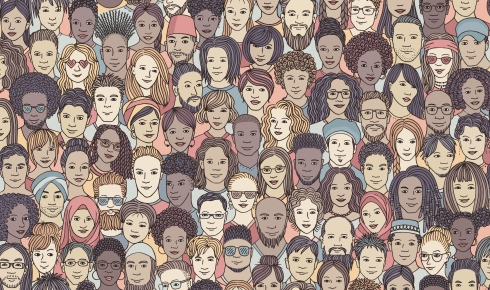Out of sight, out of mind?

Christopher Wills on ‘hidden’ disabilities and the life sciences
The Biologist 66(6) p7
What’s it like having epilepsy? People are curious about seizures – what to do if I should have one, how common are they are. My usual answer is that mine are mild, and that I have a medical ID in my wallet. However, I don’t tend to tell them about nearly falling asleep at 4pm on a hot day because of fatigue. I never tell them about my lost childhood memories, or how words can just … Sorry what was I saying? Ah yes – invisible disabilities.
As the name suggests they are disabilities that are not necessarily visible or obvious. There are 11 million people with disabilities in the UK and, according to one BBC article[1], 74% of people with disabilities don’t use a wheelchair or anything else that shows they are living with a condition. According to the disability charity Scope, two in five people with disabilities actively hide their condition.
A person with a health condition with obvious or well-known symptoms may also have multiple challenges related to that condition that are not immediately obvious. For example, epilepsy can cause seizures, but can also lead to apathy, fatigue, poor memory and language issues – which in turn can lead to issues with self-confidence, anxiety and depression.
The challenges and the needs of the people suffering with invisible disabilities vary massively, as does the list of conditions that qualify as an invisible disability. Autism, chronic fatigue syndrome (ME), chronic pain, cystic fibrosis, depression, ADHD, bipolar disorder, schizophrenia, diabetes, epilepsy, fibromyalgia, HIV/AIDs, insomnia and rheumatoid arthritis are just a few.
Employment of people with disabilities in the UK has always been worse than for people without – according to the latest UK government figures, 46% of working-age disabled people are in employment compared to 76% of working-age non-disabled people. But the figures are worse in STEM. According to one study[2], “STEM fields have 75% fewer people with disabilities than the general population”. One article in Science[3] by Jesse Shanahan states that only “9% to 10% of undergraduates are disabled,” with just 1% of PhD holders having a disability.
Invisible disabilities may prevent someone from applying for a job, may prevent them from getting to an interview, or may make someone seem less equipped for the role. In science, researchers are also expected to be active in the countless events and conferences taking place across the UK and the world throughout the year, something I have found very difficult.
Some people with invisible disabilities require regimentation and order to function well; I require a regular work and life schedule to reduce the risk of seizures and SUDEP (sudden unexpected death in epilepsy). Yet there are also those who require flexibility in their work to adjust for their condition. Then there are those of us who require regimentation day to day but flexibility when conditions flare up.
Those of us with hidden disabilities understand how hard it is to accommodate these conditions – after all, we have to live with them. But greater awareness can help both employers and employees.
As Sheryl Burgstahler states in an article for Information Technology and Disabilities[4], one of the three core barriers for people with disabilities, invisibly or otherwise, is “acceptance by educators, employers and co-workers”. If employers and HR managers were more knowledgeable on hidden disabilities it could make workplaces more accepting of those people with hidden disabilities.
There are several programmes or organisations that can help companies and other bodies. Disability Confident is a government-run scheme which offers guidance and resources on employing people with disabilities. The Employers Network for Equality and Inclusion (ENEI) is an employer network which offers bespoke training and consultancy to promote equality and diversity in the workplace. And Scope has started the #workwithme scheme, which is “a call to action for businesses to come together to create more inclusive workplaces for disabled people”. There is also STEM-specific guidance available, such as the Royal Society of Chemistry’s guide to improving lab access for people with disabilities[5].
Little things can make huge differences to helping a person living with a disability feel more open to discussing their condition and what accommodations they require. Given that many in the life sciences research, diagnose and treat these conditions, it would be fitting if this sector could also lead the way in accepting people with hidden symptoms in the workplace.
Christopher Wills AMRSB is a graduate in forensic science from Anglia Ruskin University, a fledgling scientist dealing with epilepsy for the past eight years
1) ‘The hidden challenges of invisible disabilities’. BBC Worklife [online] [Accessed 17 July 2019].
2) Atchison, C.L. & Libarkin, J.C. Professionally held perceptions about the accessibility of the geosciences. Geosphere 12 (4), 1154-1165 (2016).
3) Shanahan, J. ‘Disability is not a disqualification’. Science 351 (6271) p418.
4) Burgstahler, S. Increasing the representation of people with disabilities in science, engineering and mathematics. Information Technology and Disabilities 1 (4) (1994).
5) The safety of laboratory workers with disabilities. RSC, May 2013.


